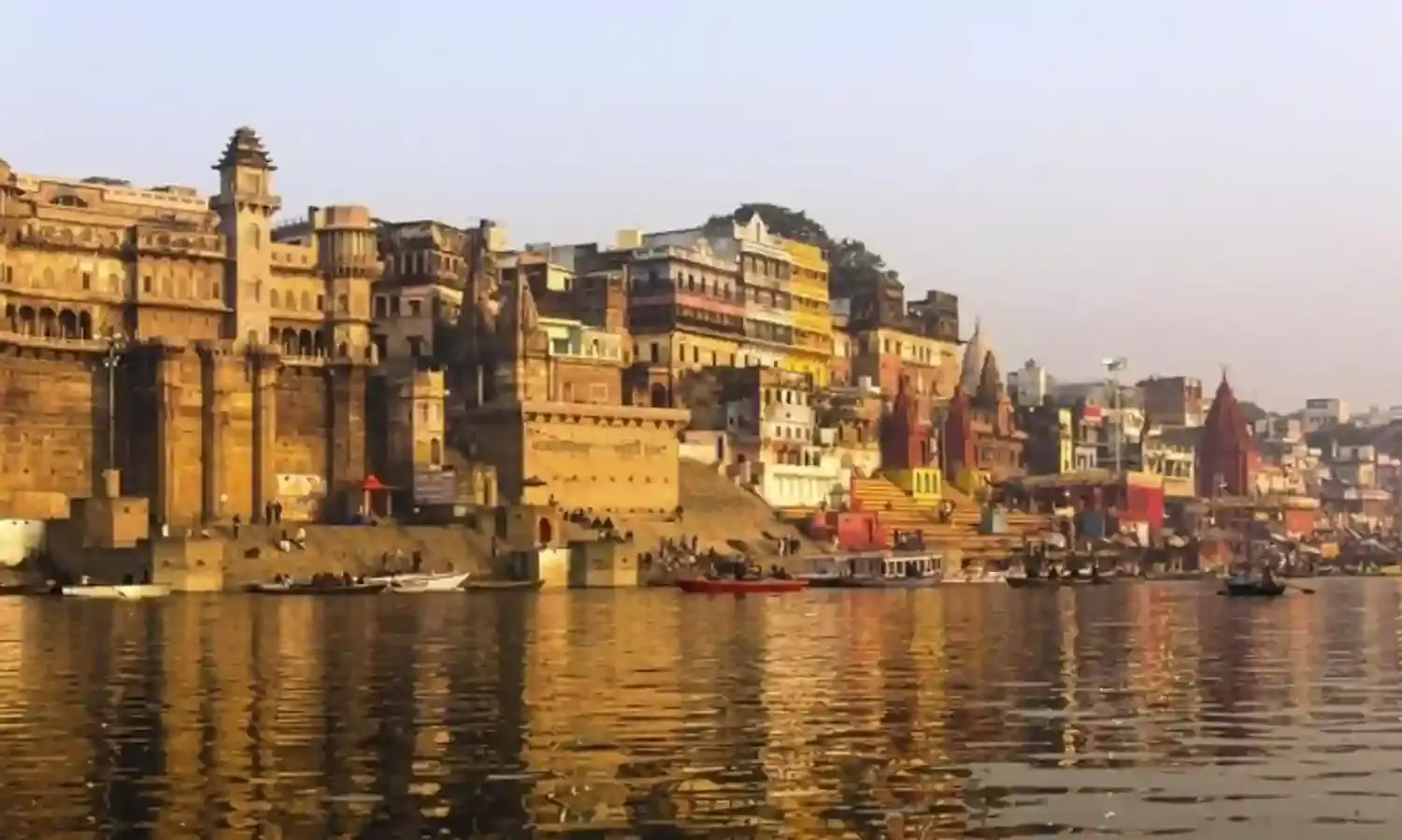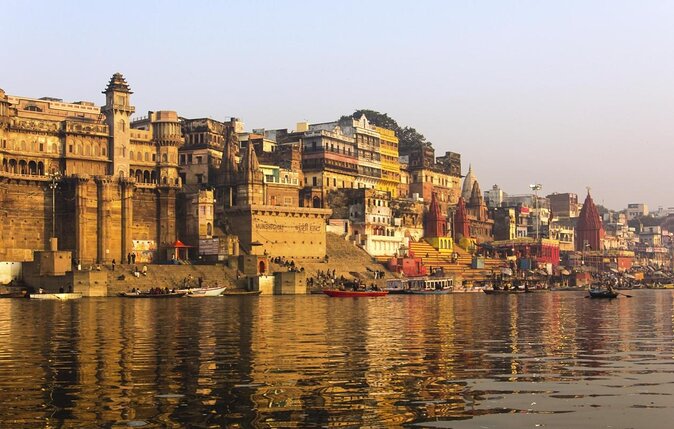City of Gods, Humans and Stories
Banaras has always mesmerised

The world was not always the way it is today. Imagine times nearly four thousand years ago. Imagine Vedic-speaking populations forced to abandon their homes, migrating in large numbers towards new settlements. Many trooping into the Gangetic plains from the northwest. Most mesmerised by the flat, fertile land and forests spread before them over millions of acres.
Those refugees may have seen the Ganges in full flood at the height of the rains when it looked more like an ocean than a river that despised all barriers natural, and artificial. The newcomers noticed the nutrient rich sediment deposited by the Ganges as it fertilised the soil along its shores. This was reason enough to consider the river sacred.
To this day the Ganges flows through well-populated regions, providing fresh water to millions of people. The river has multiple use like fishing, irrigation, bathing and worship. However the Vedic rivers of the rishis are not the rivers of today.
And who knows who was the first to settle down on the banks at the confluence of the rivers Varuna and Assi, two tributaries of the Ganges? According to one myth it was Shiva who founded Banaras, by dropping the head of Brahma on this part of the land that has since blossomed into one of the country’s holiest cities.
A new pictorial book called Banaras of Gods, Humans and Stories lights up the beauty and history once again of Varanasi also known as Kashi, city of light and enlightenment.
Writer Nilosree Biswas and photographer Irfan Nabi illustrate the visual glow that Banaras gets from the Ganges river and how the world continues to exclaim at the sight. The city is best seen from the river, and visitors have left breathless accounts of what they witnessed.
The Chinese traveler Hiuen Tsang noted in his seventh century journal that streams of pure and clear water flowed through the city. Sanskrit puranas from the same time say that during years of exceptional flooding the city on the high ridge was completely surrounded by water, becoming a virtual island. The sight of the holy Ganges encircling the holy city is praised as the most auspicious of times… and during repeated urban planning both beautification and veneration were always kept in mind.
Christian missionary and Indologist M.A Sherring lived in Banaras in the nineteenth century and wrote a book called The Sacred City of the Hindus: An Account of Banaras in Ancient and Modern Times. Sherring wrote:
“For picturesqueness and grandeur, no sight in all the world can well surpass that of Benaras as seen from the river Ganges.”
British art historian E.B Havell adds:
“The traveller who wishes to realise the magnificence of Banaras on the river side and to catch some reflection of that epic brightness which still shines through all that is sordid and vulgar in the modern city must be at Dasaswamedh Ghat before the first streak of dawn. This is what he may see as he floats slowly down the river… There is a coppery glow on the eastern horizon, the Ashvins, twin heralds of the dawn are rising. Curling wreaths of evaporation rise from the placid river and a blanket of white mist lies over the great sandy waste land laid bare by the shrinking of the monsoon flood.”
Banaras has always impressed people. The kings of Magadha to the Gahadavala king Gopal Chandra to emperors Humayun, Akbar, Jahangir, Shah Jahan as well as their Hindu mansabdars, provincial nawabs in charge of Banaras, to the individual kings and queens of various kingdoms like Ahalyabai Holkar of the Maratha region, Rani Bhawani of Bengal, various kings from Rajput clans to innumerable Brahmin scholars, leaders, merchant groups, math heads and their affiliates, the power heads of Maratha rule, the Peshwas and Scindias of Gwalior have invested in Banaras.
Without any obligation to do so, Mughal rulers, European merchants and missionaries of Portuguese, Italian, Russian, Dutch and British origin have left us with incredible descriptions of travel, and personal accounts of Banaras.
There are details of the relationship enjoyed by the Mughal rulers with the people of Banaras. During the rules of Akbar, Jahangir and Shah Jahan the accounts are particularly vivid and intimate. Akbar rooted his support for Banaras, well known seat of Hindu theological wisdom, through his trusted Rajput officials who were also his relatives like Man Singh.
In 1585 Raja Todar Mal, the finance minister of Akbar’s court funded the building of the Vishwanath Temple. It was a remarkable sign of Akbar’s inclusiveness and his curiosity to understand the Sanskritised world of Banaras, says the author.
Todar Mal maintained strong ties with the Sanskrit literary world as patron. He promoted an exclusive Hindu landscape and also acted as a bridge between Brahmanical activism and the Mughal court with the intent to provide full support to Sanskrit scholarship in Banaras.
Banaras received patronage from the state. This was the biggest resource of the day inspiring princely kingdoms to step forward to revive the study of Sanskrit and ritual practices, to encourage Brahmanical perspectives, build temples, kunds or sacred ponds and brahmapuris, the seat of Sanskrit scholastic practices.
From the late sixteenth century to nearly the end of the eighteenth, mind-boggling investments took place toward the resurgence of a carefully crafted Banaras skyline. Massive structures were built on the riverbank like temples that were constructed and restored, along with living quarters for the Brahmin population.
By the end of the eighteenth century the incredible forts, palaces and temple spires that awed the onlooker became the most recognised visual representation of Banaras, sacred Hindu city where the last step of each ghat merges with the holy river.
At the dawn of the nineteenth century, the banks of the Ganges were decorated by a string of palaces whose beautiful facades glittered atop immense stairs. There was a separate residence for each raja with the palace of the kings of Nagpore shinning bright above a flight of a hundred stairs made of a massive block of white sandstone.
Just as architecture is a powerful language of visual representation so is photography, and Nabi’s photos partner well with the text by Biswas in providing yet another perspective to Banaras, which has been photographed and written about like no other city in the world.

Banaras of Gods, Humans and Stories by Nilosree Biswas and Irfan Nabi is published by Niyogi, 2021



